When designing products it seems logical to include three dimensional body measurements. This page gives an overview of several tools that can be used in the design of three-dimensional products.
The shape of a well-designed helmet is not defined by only one measurement such as head circumference. Preferably designers would like to have an impression of the total surface modelling of the skull of a representative sample of the targeted population.
Currently progress is made on collection of this type of anthropometric data with 3D body scanners. An example is the Size Spain 2008 project in which the Institute of Biomechanics of Valencia did a study that included three complete body scans and additional measurements for 10.414 people in age range 12-70.
Application of this type of data also requires new techniques and tools. Besides providing raw data in the form of digital 3D models, like was done in for instance the CAESAR project, anthropologists are looking for other ways to present and use this extensive type of information. An example of this is the Size China projects in which the results are presented in a series of physical models that together represent the head shape of the Chinese population. The headforms of the sizechina project are available trough www.certiform.org in digital format as well sl-made in aluminium.
Disadvantages
- Availability of 3D anthropometric data is still limited
How to use three-dimensional data
Mannequin
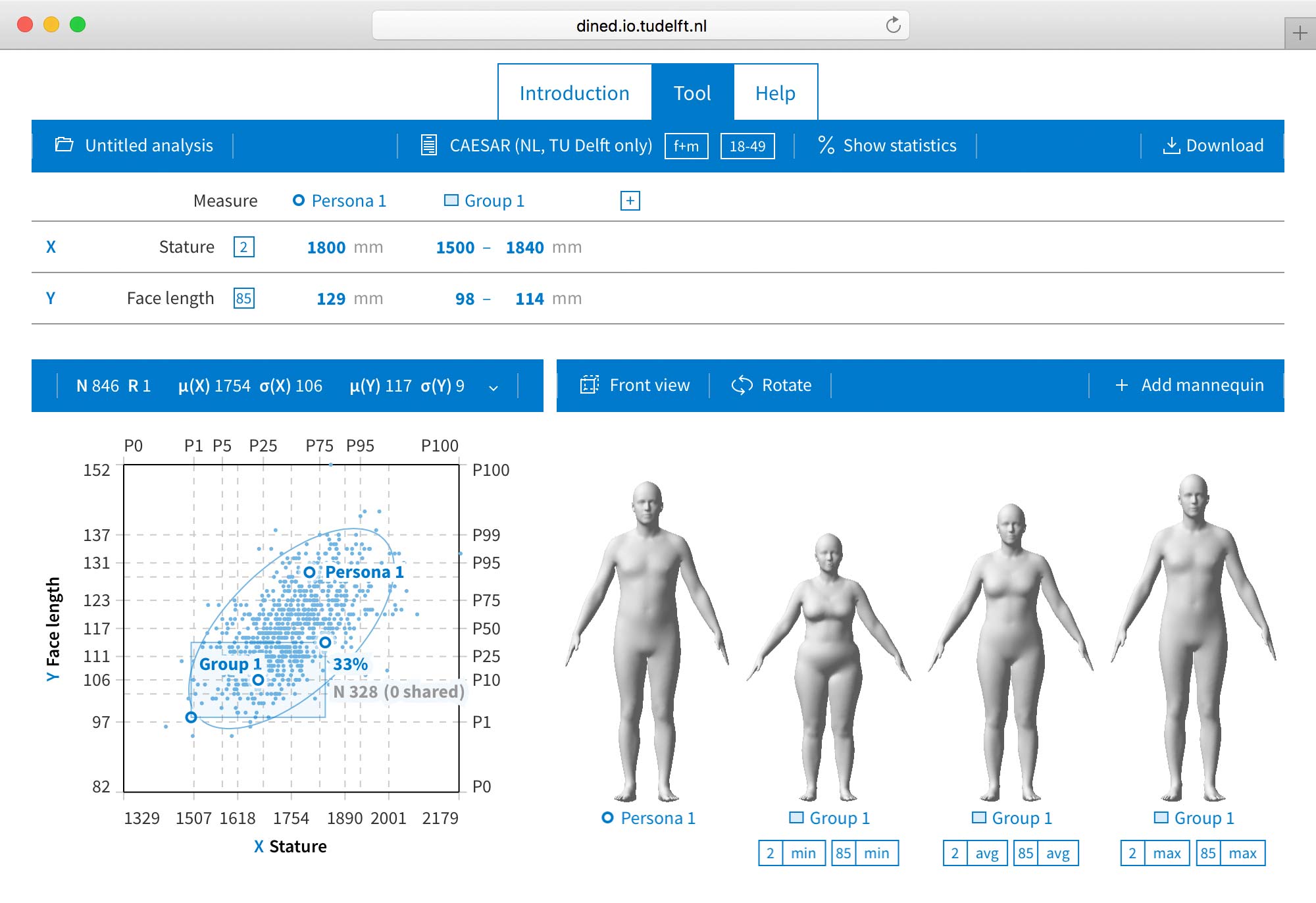
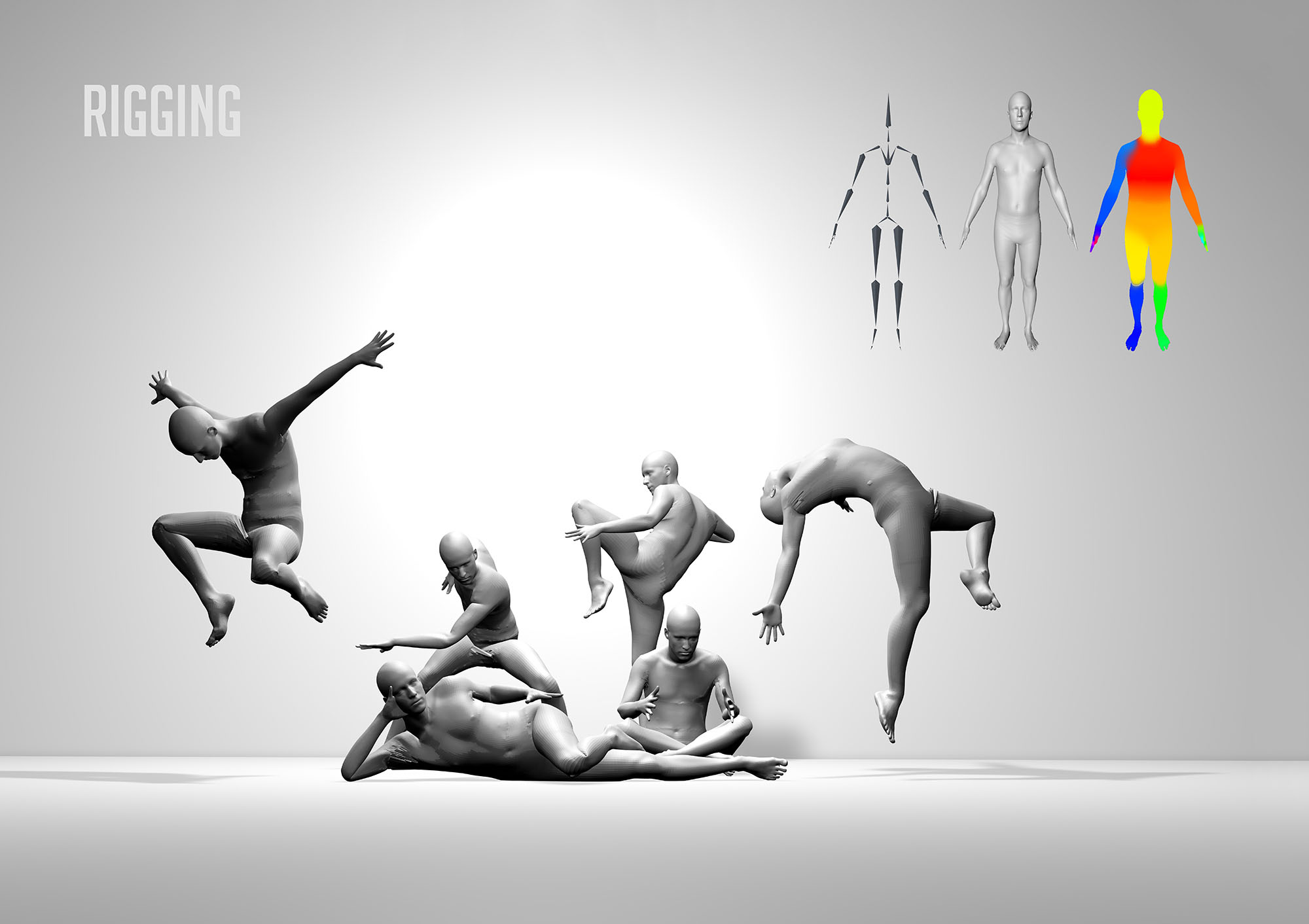
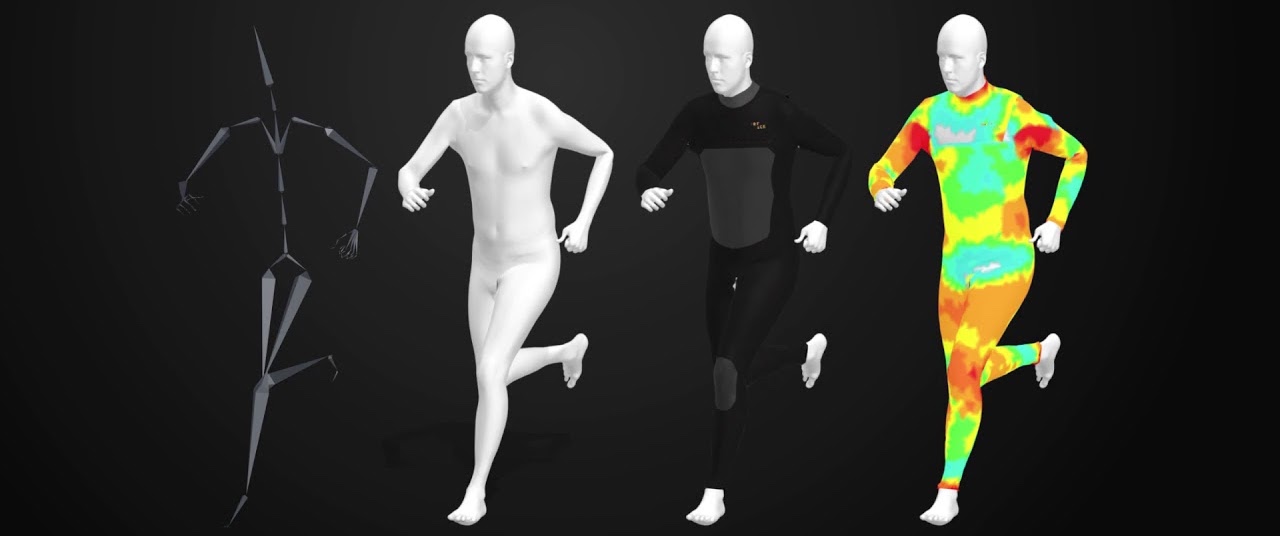
Through the Mannequin-tool, we want to make 3D anthropometry accessible for engineers, designers, and ergonomists by providing an intuitive interface for exploring 3D body shape variation and creating 3D design manikins, based on a database of 3D body scans. In the open data spirit of DINED, Mannequin can be freely used for both research and commercial purposes.
Internally, our platform consists of three parts:
- The first part comprises the processing and statistical shape analysis of the 3D scan database through the use of non-rigid registration and PCA. This part is executed offline in order to make the database available in the system.
- The second part, concerns the storage of the calculated models and traditional measurements table on a server and making it approachable via a web application programming interface. The interface provides functionality for retrieving measurement samples and regression models that relate the measurement percentiles with 3D body shapes.
- The third part is a user interface provided as a website. It consists of a population selection and specification panel, a measurement selection and manikin creation panel, a scatter plotting panel for exploring the data distribution and to view the position of the manikins in the population, a panel for interactive 3D viewing of the manikins, and a module to download manikin data, scatter plots, and STL-files of the manikins.
Manikins generated with DINED Mannequin can also be animated, e.g. for use in presentations or for virtual testing of products. On the right, a P50 male manikin was animated using Mixamo
The applicability of the Mannequin platform is demonstrated by the work of Staal, Huysmans, and Molenbroek (2019). They used the Dutch male database to set up a sizing system for a wetsuit and create a 3D design manikin for each size. They then designed an M-size wetsuit in a textile design software (CLO3D) based on the medium size design manikin and digitally evaluated and after prototyping also physically evaluated the wetsuit design. They concluded that 3D anthropometric analysis in combination with virtual textile design software allows a designer to develop a good fitting wetsuit in very short time-span.
For the future, we envision the DINED Mannequin platform as an open-data hub for researchers to share their 3D anthropometric studies of external and internal (e.g. bone) body shape of various target groups, like obese, elderly, and children, and for designers to intuitively explore body shape variation in the design of consumer and medical products.
ADAPS
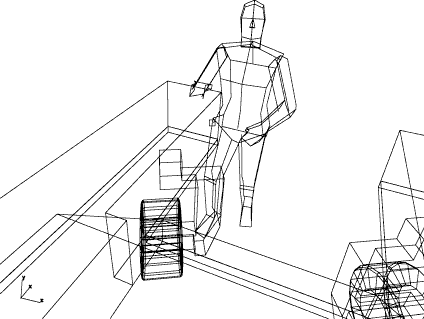
ADAPS - acronym for Anthropometric Design Assessment Program System - started in 1979 as a graduation project of Frits Post in the Product Ergonomics Group of the Faculty of Industrial Design Engineering at the Delft University of Technology (DUT). Using punch-cards as data-input it ran on a mini-computer (the PDP11-series) at the Computing Centre of DUT. It has developed into an ongoing research project in the wider field of Computer Aided Anthropometric Assessment. ADAPS allows the user, designer, ergonomist or human factors specialist, the possibility to visualize on a computer screen a manikin model, integrated within a relevant workspace design. Flexibility in adapting the design to functional postures of a chosen percentile or length category of a target population is one of the central features. Ease of manipulating the manikin model, e.g. by supplying reach-algorithms for the model's hands and feet, directing its line-of-sight and displaying the resulting field-of-view (see illustration below) are standard facilities of ADAPS.
In 1992 conversion of the ADAPS-software onto PC-DOS was realized. New ideas were implemented: "active viewing" (looking around by mouse-indication while inside the field-of-view mode) and "seeing what you are doing" (reaching with hands and feet available while inside the fov-mode). The value of ADAPS for educational purposes and as a design assessment tool is demonstrated by the sale of the program, nationally as well as internationally. ADAPS runs now as a free downloadable independent application.and can cooperate with CAD software like Solid Works.
Ongoing research is focussed on the interpretation of the field-of-view in relation to "spatial situation awareness", the development of a range of manikin models of small children and on the rapid prototyping in foam of the manikin models in functional postures. Long term possibilities are automatic manikin model generation from 3D anthropometric surface scans.3D Human model
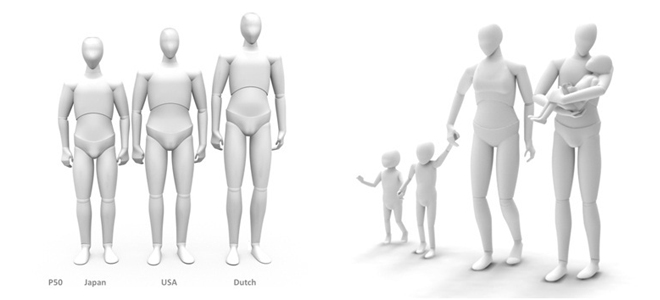
3D Human Model is an anthropometric validation tool for use in CAD design, developed by SLIMDESIGN. It has been developed using the 1D data from DINED and is specifically designed for use with SolidWorks. Commercial models are available on the website and for TU Delft students a simplified set of models is available. Log in with your verified TU Delft account for further instructions.